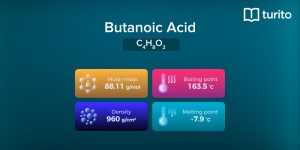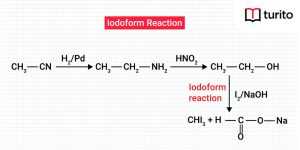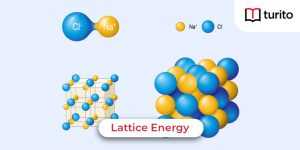Redox Reactions
Chemistry is the arm of science that deals with various matters and changes in their states. Some changes occur only physically, while some occur chemically. These changes lead to different chemical reactions.
One important category of chemical reactions is redox reactions. Several phenomena, both physical and biological, are concerned with redox reactions. There are many uses of redox reactions in pharmaceutical, biological, agricultural, metallurgical, and many more industries.
In this article, we will discuss these redox reactions.
What is a Redox Reaction: In Terms of Electron Transfer Reactions
Redox is a chemical reaction in which oxidation and reduction occur simultaneously. In a redox reaction, one substance is oxidised, and the other is reduced. Hence, oxidation and reduction proceed simultaneously.
(i) Oxidation means a loss of electrons or increase in oxidation number. For example,
Na → Na+ +e–
Sn+2→Sn+4 + 2e–
(ii) Reduction means a gain of electrons or decrease in oxidation number. For example,
Fe+3+e–→Fe+2
Cl2 2e–→ 2Cl–
In answering the question of what is a redox reaction, it can simply be put as an oxidation-reduction reaction.
What is redox reaction composed of is two reactions, one representing only oxidation while the other representing only reduction. The reaction representing oxidation is called oxidation half-reaction. In comparison, the reaction that represents reduction is called reduction half-reaction. Both these reactions are collectively called half-reactions.
Example redox reaction,
Zn (s) + CuSO4(aq) → ZnSO4 (aq) + Cu (s)
Here, Zn has been oxidised to Zn+2, whereas Cu+2 ions have been reduced to Cu.
What is a Redox Reaction: In Terms of Oxygen and Hydrogen
A redox reaction consists of two reactions, i.e., oxidation half-reaction and reduction half-reaction. The classical concept of redox reaction can explain oxidation and reduction based on oxygen and hydrogen atoms.
Oxidation reaction:
Oxidation may be the process involving adding oxygen or any other electronegative atom. According to the definition of oxidation, the following reactions constitute oxidation processes:
2Mg (s) + O2 (g) → 2 MgO (s)
S (s) + O2 (g) → SO2 (g)
In these examples, oxygen is added to magnesium and sulphur. The elements magnesium and sulphur are oxidised because of the addition of oxygen. Similarly, electronegative atom chlorine is added to magnesium.
Mg (s) + Cl2 (g) → MgCl2 (s)
Oxidation may also be defined as the process involving removing hydrogen or any other electropositive atom. For example,
2H2S (g) + O2 (g) → 2S (s) + 2H2O (l)
2KI (aq) + H2O (l) + O3 (g) → 2KOH (aq) + I2 (s) + O2 (g)
In these examples, removal of hydrogen and removal of electropositive element, potassium, takes place. Hence, these reactions undergo oxidation.
Reduction reaction:
Reduction may be the process involving adding hydrogen or any other electropositive atom. Removing oxygen or any other electronegative atom is also known as reduction. The following reactions represent reduction processes according to the limited definition of reduction:
- Addition of hydrogen: Br2 (g) + H2S (g) → 2HBr (g) + S(s)
- Addition of electropositive element (e.g. mercury): 2HgCl2 (aq) + SnCl2 (aq) → Hg2Cl2 (s) + SnCl4 (aq)
- Removal of oxygen: CuO (s) + H2 (g) → Cu (s) + H2O (l)
- Removal of electronegative element (e.g. chlorine): 2FeCl3 (aq) + SO2 (g) + H2O (l) → 2FeCl2 (aq) + H2SO4 (aq) + 2HCl (aq)
Oxidising Agent and Reducing Agent
Generally, oxidising agents and reducing agents are defined as
| Oxidising Agent | Reducing Agent |
| Oxidises some other species and is itself reduced. | Reduces some other species and is itself oxidised. |
| Gives up oxygen or any other electronegative element. | Gives up (loses) hydrogen or any other electropositive element. |
| Accepts hydrogen or any other electropositive element. | Accepts oxygen or any other electronegative element. |
| Gains one or more electrons, i.e., acts as an electron-acceptor. | Loses one or more electrons, i.e., acts as an electron-donor. |
| The oxidation number of an effective element decreases, i.e., it gets reduced. | The oxidation number of an effective element increases, i.e., it gets oxidised. |
| Also known as oxidant. | Also known as reductant. |
| Some examples are H2O2, halogens, CuSO4, KMnO4, HNO3, etc. | Some examples are oxalic acid, FeSO4, H2S, H2SO3, KI, H2O2, etc. |
To understand oxidising agents and reducing agents, let’s take an example of redox reaction:
K2Cr2O7 + 7H2SO4 + 6KI → Cr2(SO4)3 + 4K2SO4 + 7H2O + 3I2
Here, the oxidation numbers of Cr and I on the reactant side are +6 and -1, respectively. While their oxidation numbers on the product side are +3 and 0, respectively. Hence,
Oxidation reaction: 6I– → 3I2
Reduction reaction: Cr2O72- → 2Cr3+
Types of Redox Reaction
Redox reactions are classified into four basic categories:
- Combination Reaction:
A general combination reaction is denoted in the manner
A + B → AB
Here, either A and B or both A and B must be in the elemental form for such a reaction to being a redox reaction.
Combustion reactions using elemental O2 and other reactions concerning elements other than O2 are redox reactions. Some example of redox reaction:
3Mg + N2 → Mg3N2
C + O2 → CO2
CH4 + 2O2 → CO2 + 2H2O
- Decomposition Reaction:
These reactions lead to the breakdown of a compound into two or more elements or components, at least one of which must be in the elemental state. Some examples of redox reaction are:
2NaH → 2Na + H2
2KClO3 → 2KCl + 3O2
These are the opposite of combination reactions. Their general chemical equation is
AB → A + B
- Displacement Reaction:
In a displacement reaction, an ion (or an atom) in a compound is replaced by another element’s ion (or an atom). It may be denoted as:
X + YZ → XZ + Y
They are divided into two types:
- Metal Displacement Reaction: If another metal can displace metal in a compound in the uncombined state. For example,
V2O5 + 5Ca → 2V + 5CaO
Cr2O3 + 2Al → Al2O3 + 2Cr
- Non-Metal Displacement Reaction: These reactions include displacement of hydrogen and a hardly occurring reaction entailing oxygen displacement. For example,
Ca + 2H2O → Ca(OH)2 + H2
2Fe + 3H2O → Fe2O3 + 3H2
- Disproportionation Reaction:
In these reactions, an element in one oxidation state is simultaneously oxidised and reduced. One reacting substance should always contain an element that can exist in at least three oxidation states. Some example redox reactions:
Cl2 + OH- → ClO- + Cl- + H2O
P4 + 3NaOH + 3H2O → 3NaH2PO2 + PH3
What is Redox Reaction Balancing?
To balance a chemical equation in redox processes, here are two methods.
- Oxidation Number Method:
In this method, during the redox process, the number of electrons gained during the reduction reaction is balanced with the number of electrons lost in oxidation. Steps to balance redox reactions are:
Step 1: Write an ionic equation.
Step 2: Assign the oxidation state of all elements or compounds.
Step 3: Compute the increase or decrease in oxidation number and balance them.
Step 4: Add H+ ions to that side where there is an excess of electrons.
Step 5: At last, count the H-atoms, and add a suitable number of water molecules on the opposite side to get a balanced redox change.
- Half-Reaction Method:
In this technique, the two half equations are levelled up separately and then added together to give a balanced equation. Steps to balance redox directions are:
Step 1: Write an unbalanced equation for the reaction in ionic form.
Step 2: Write its oxidation half-reaction and reduction half-reaction.
Step 3: Balance the atoms other than O and H in each half-reaction.
Step 4: For reactions occurring in an acidic medium, add H2O to balance O atoms and H+ to balance H atoms.
Step 5: Add e– to the other side of the reactions to balance the charges.
Step 6: Add both reactions and write the overall reaction.
Summary
Redox is formed from two words, i.e., Red stands for REDuction and Ox stands for OXidation.
In a redox reaction, the number of electrons lost by the substance oxidised is the same as that gained by the substance reduced. Also, in a redox reaction, the total increase in the oxidation number of the oxidised element equals the total decrease in the reduced oxidation number of the element.
These reactions are general and essential to some of the chief functions of life like respiration, corrosion or rusting, combustion, and photosynthesis.
Frequently Asked Questions
Q1. What is an oxidation number?
An atom’s oxidation number is the apparent charge on the atom in its compound or ion state.
Q2. What is a redox reaction, oxidising agents, and reducing agents in oxidation number?
- Oxidation: An increase in the element’s oxidation number in the given substance.
- Reduction: A decrease in the element’s oxidation number in the given substance.
- Oxidising agent: A reagent that can increase an element’s oxidation number in a given substance. These reagents are called oxidants also.
- Reducing agent: A reagent that lowers an element’s oxidation number in a given substance. These reagents are also called reductants.
- Redox reactions: These involve changes in the interacting species’ oxidation number.
Q3. How can I measure the strength of oxidant and reductant in a redox reaction?
In redox systems, you can adopt the titration method to govern the strength of an oxidant-reductant using a redox-sensitive indicator.

Relevant Articles
Butanoic Acid – Structure, Properties, Uses
Butanoic Acid The carboxylic acid, butanoic acid, has the structural …
Butanoic Acid – Structure, Properties, Uses Read More »
Read More >>What is Iodoform? Characteristics and Uses
Iodoform The formula for Iodoform is CHI3. It is biotic …
What is Iodoform? Characteristics and Uses Read More »
Read More >>Lattice Energy – Explanation, Factors & Formulas
Lattice Energy Lattice energy evaluates the intensity of the ionic …
Lattice Energy – Explanation, Factors & Formulas Read More »
Read More >>Lead Acetate – Definition, Properties, Uses
Lead Acetate Have you ever licked lipstick when you sketch …
Lead Acetate – Definition, Properties, Uses Read More »
Read More >>




















Comments: